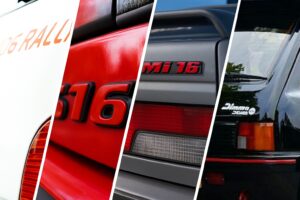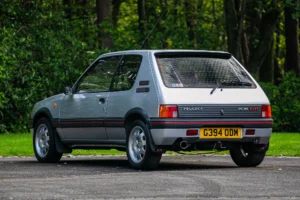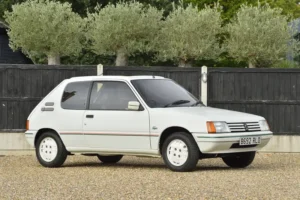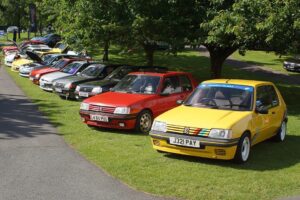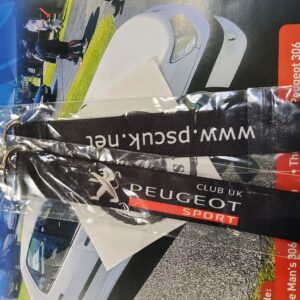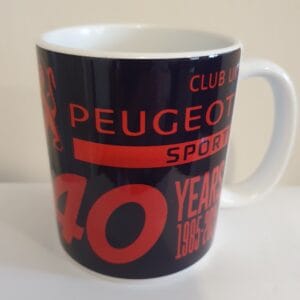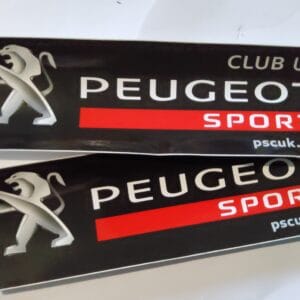
| Overview | |
| Manufacturer | Peugeot |
| Also called | Guangzhou-Peugeot GP 7202 |
| Production | 1979–1992 (Europe) 1981–1995 (Argentina) 1990–1997 (China) 1981–1987 (Indonesia) 1981–1991 (Taiwan) |
| Assembly | Sochaux, France Guangzhou, China Vigo, Spain Los Andes, Chile Villa Bosch, Argentina Cairo, Egypt (AAV) Heidelberg, Victoria, Australia(Renault Australia) Enfield, Australia (Leyland) Jakarta, Indonesia (Gaya Motor) Bangkok, Thailand (Yontrakit Group) Changhua, Taiwan Setúbal, Portugal (Movauto) Kaduna, Nigeria (PAN) Johor Bahru, Malaysia (OASB) |
| Designer | Pininfarina and Peugeot |
| Body and chassis | |
| Class | Large family car/Compact executive car (D/E) |
| Body style | 4-door saloon 5-door estate |
| Layout | FR layout |
| Powertrain | |
| Engine | Petrol engines: 1796 cc XM7A I4 1971 cc XN1/XN6 I4 1995 cc ZEJ “Douvrin” I4 2155 cc N9T “Simca 180” turbo I4 2165 cc ZDJ “Douvrin” I4 2849 cc ZN3J “PRV” V6 Diesel engines: 2304 cc XD2 I4 (NA/turbo) 2498 cc XD3 I4 (NA/turbo) |
| Transmission | 3-speed automatic ZF 3HP22 4-speed automatic ZF 4HP22 4-speed manual BA 7/4 5-speed manual BA 7/5 5-speed manual BA 10/5 |
| Dimensions | |
| Wheelbase | 2,743 mm (108 in) (sedan) 2,900 mm (114 in) (wagon) |
| Length | 4,579 mm (180 in) (sedan) 4,898 mm (193 in) (wagon) |
| Width | 1,737 mm (68 in) (sedan) 1,730 mm (68 in) (wagon) |
| Height | 1,424 to 1,446 mm (56 to 57 in) (sedan) 1,540 mm (61 in) (wagon) |
| Curb weight | 1,210 to 1,410 kg (2,668 to 3,109 lb) |
The Peugeot 505 is a large family car produced by the French manufacturer Peugeot from 1979 to 1992 in Sochaux, France. It was also manufactured in various other countries including Argentina (by Sevel from 1981 to 1995), China, Indonesia and Nigeria. The 505 was Peugeot’s last rear-wheel drive car. According to the manufacturer, 1,351,254 505s were produced between 1978 and 1999 with 1,116,868 of these being saloons/sedans.
Officially unveiled on 16 May 1979, the 505 was the replacement for the 504 with which it shared many of its underpinnings. It was originally available as a sedan/saloon, a station wagon/estate, including an eight-passenger Familiale version, were introduced at the 1982 Geneva Motor Show. The styling, collaboration between Pininfarina and Peugeot’s internal styling department, is very similar to that of the smaller 305. The original interior was designed by Paul Bracq, generally better known for his work for Mercedes-Benz and BMW. It is known as the “Work Horse” of Africa today.
After initially being produced only in left-hand drive form for its first few months, the 505 was available in right-hand drive form for the UK market from October 1979. Its bestselling competitor in the UK was the Ford Granada. The 505 was praised by contemporary journalists for its ride and handling, especially on rough and unmade roads; perhaps one reason for its popularity in less developed countries; – “Remember that the 505´s predecessor, the 504, had an outstanding ride. It took a British-market model on a hard charging drive across the green lanes of the Chilterns. The impacts were well suppressed and the car veritably floated over the undulations and potholes. The 505 also had good ground clearance; if it wasn’t enough though, Dangel offered a taller four-wheel drive version of the 505 Break/Familiale equipped with either the intercooled turbodiesel 110hp (81kW) engine or the 130hp 2.2 L petrol (96kW) engine. The four-wheel drive 505 also had shorter gear ratios.
The interior styling was viewed positively in contemporary reviews: “Having settled into the 505’s neat cockpit one notices how handsomely styled it all would appear to be. The tweed seats and brown trim look smart and less confrontational than offerings from a certain other French marque. But the ergonomics were criticised too: “The ashtray was competitively sized but is placed directly behind the gear stick. For British market cars, this will be a constant nuisance while our continental cousins will consider the placement quite logical and natural.
The estate model was launched in 1982, and was available with seven seats, just like the Peugeot 504 estate. The range was given a facelift, including an all new interior, in 1986, but European Peugeot 505 production began to wind down following the launch of the smaller Peugeot 405 in 1987. Saloon production came to a halt in 1989, when Peugeot launched its new flagship 605 saloon, while the estate remained in production until 1992 – although plans for an estate version of the 605 never materialised. The 605 was in production for a decade but never matched the popularity of the 505. In some countries such as France and Germany, the 505 estate was used as an ambulance, a funeral car, police car, military vehicle and as a road maintenance vehicle. There were prototypes of 505 coupés and 505 trucks, and in France many people have modified 505s into pickup trucks themselves.
The 505 was one of the last Peugeot models to be sold in the United States, with sedan sales ending there in 1990 and wagon sales in 1991. The last sedans sold had PRV’s 2.8 V6 engine only. Unique to the US were turbocharged station wagons, both with petrol and diesel engines. 505s were also sold in Australia (where they were assembled by Renault Australia from 1980 to 1981, and by Leyland Australia from 1981 to 1983), Argentina, Chile, China, and New Zealand. In New York City, Peugeot 505 diesels were briefly used as taxicabs.
The car was summed up as follows by motoring writer Archie Vicar: “The 505 is a saloon with quite a pleasant appearance, quite efficient engines, quite comfortable seating, quite nice steering and a quite reasonable price. And it is quite well constructed. So, you might say it was merely average. But can it really be that simple? Have Peugeot in fact; played a very clever game where, instead of dazzling us with technology or breath-taking styling, they have decided to woo us with understatement of the profoundest kind?”






